You’ve seen Vernon W. Campbell as good cops, bad cops, ornery inmates, bouncers, all sorts of tough guys. He’s actually a fine gentleman, helps a bunch of local performers navigate show business, and keeps busy himself as a working actor with SAG, AFTRA and Actors’ Equity affiliations. Andy Garcia’s “City Island,” which opened in mid-March, has Vernon’s latest big screen appearance, and he’s been seen in “Mercy,” the TV hospital drama. One of the great Oscar underdogs, Mickey Rourke’s “The Wrestler,” has him playing the bouncer at the strip joint where Marisa Tomei dances. HBO’s “Oz” is also on Vernon’s resume. This winter he said he could use some new headshots, so I told him to show me his faces and we did a shoot the afternoon before he got on a plane to Hollywood to make the networking rounds of the Oscar night parties. I pushed him a bit to give me more of his range, and here’s the result. I asked if he’d ever consider playing a happy mailman or a kiddie show character. “Of course,” Vern smiled. “I even want to play Shakespeare before I’m through, just nobody’s asked me yet.”
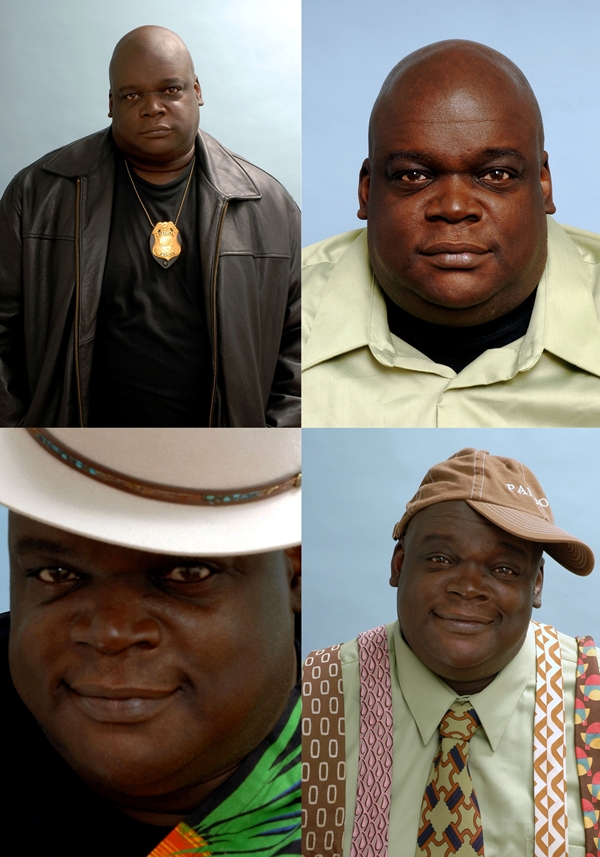
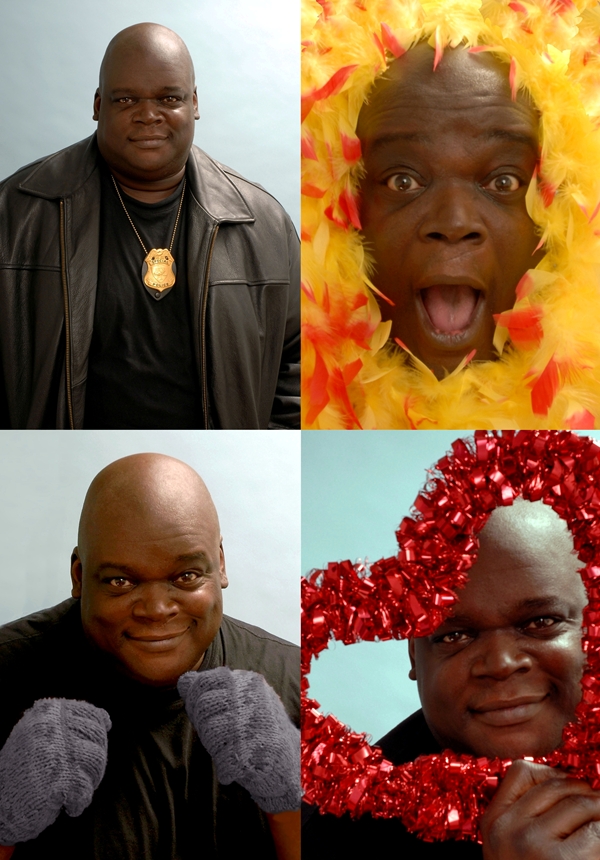
I had lunch at a lovely Turkish restaurant on the Upper East Side the other day with Sheila Simpson. I always describe her to friends as “my friend who’s a concert pianist,” hoping they’ll be as impressed as I always have been. Sheila and I have known each other since 1973, and share that special bond that New Yorkers have when we’re non-natives but know this is the only place for us to be. Sheila started life in Belzoni, Mississippi, where her mother ran the local dance school, and she was a child prodigy, playing her first solo piano recital at 11 and performing as a soloist with three different orchestras by age 15. A graduate of the University of Alabama, she received her master’s degree in piano performance from the Manhattan School of Music, graduating with honors. It was sometime after that, during the period she worked as a rehearsal pianist with the Alvin Ailey Dance Company, that we got to know each other. She was at that time studying with Arminda Canteros, a much-loved Argentinian piano teacher whose playing made tangos a permanent part of my music appreciation. One of Arminda’s concerts at Alice Tully Hall in the ’70s was one of the highlights of my life, and I’ll always thank her for turning me on to 20th century Spanish and Latin American music. I love it when Sheila plays anything by Ginastera.
Over the years, Sheila has performed at Merkin Hall, in the Lincoln Center neighborhood, in 2001, and at Princeton Theological Seminary in 2004. Both recitals are available on CDs through Sheila’s website, SheilasPiano.com. She’s performed at the United Nations, and around the world. In the past few years I’ve also heard her perform two recitals in the gallery at Tenri Cultural Institute on West 13th Street, presented by the Leschetizky Association, which was founded in 1942 by pupils of Theodor Leschetizky (1910-1915) to perpetuate his memory. He was one of the founders of the St. Peterburg Conservatory of Music, one of his greatest pupils was Paderewski, and one of his famous sayings was “No art without life, no life without art.” Sheila belongs to the Association, and passes along her own knowledge of being a virtuoso to her many students. A musical life is a rich one, and one that keeps on giving, generation after generation.
It was to deliver a few prints I’d made of the picture below, which I snapped during the last round of applause at last May’s recital at Tenri, that took me to the Upper East Side the other day.
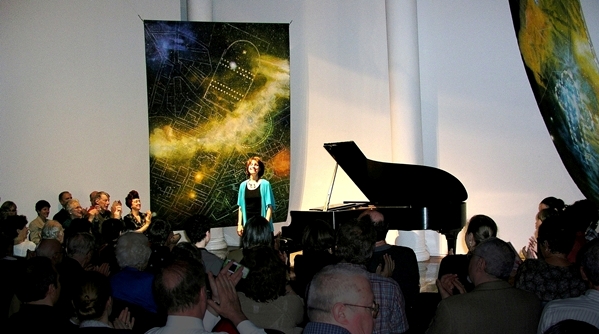
Sheila and I did studio portrait session last fall, in preparation for this year’s round of concerts. Here are some of the results.
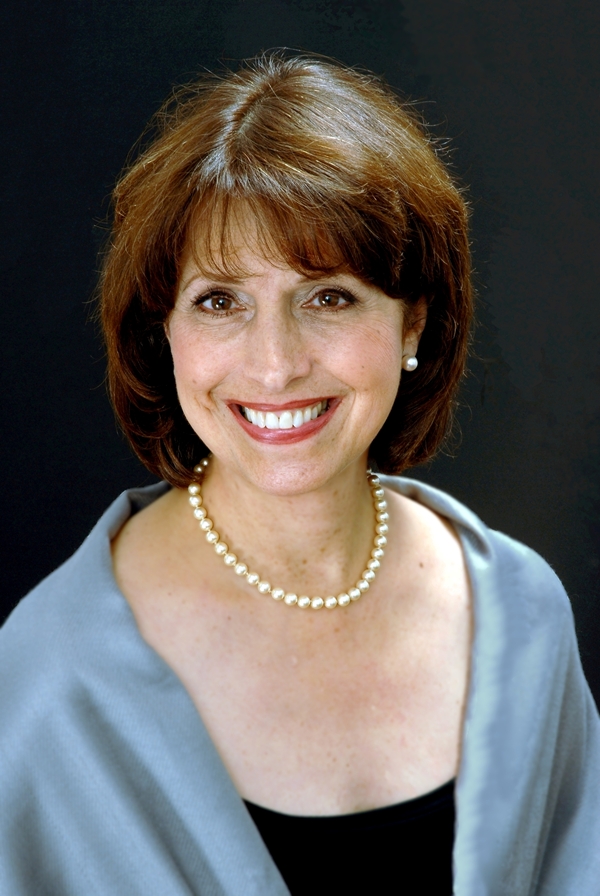

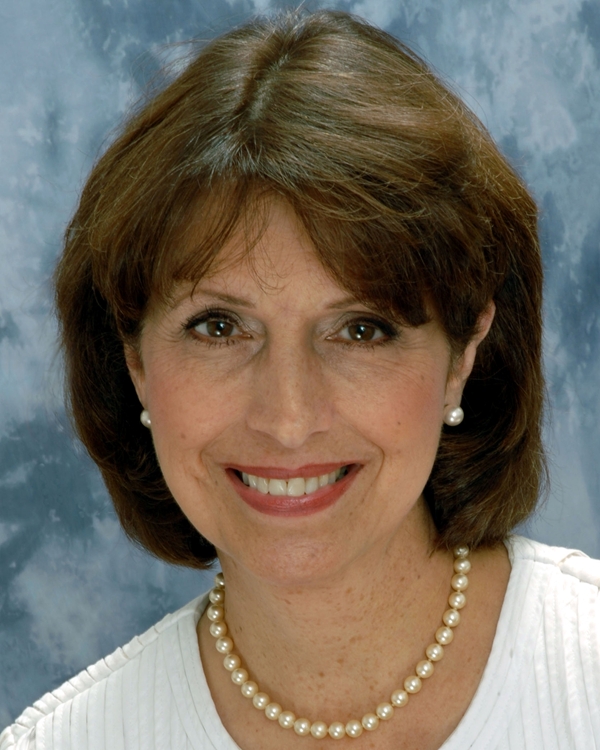
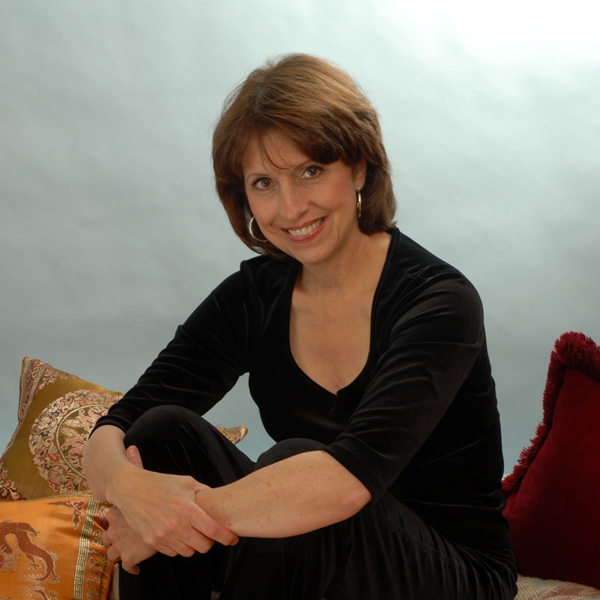
In October, Sheila played Saint-Saens’ 2nd Piano Concerto in a concert with the Pine Bluff (Arkansas) Symphony, and because most of her New York friends couldn’t attend, she invited us to either of two preparation runthroughs she scheduled in one of the rooms upstairs at Steinway Hall, on West 57th Street. A pianist friend of hers, Francisco Miranda, played a transcription of the orchestra’s part while Sheila played the piano solo she would perform a few days later. Three movements, each very different, going as she said in the introduction “from Bach to Offenbach” in style. Only one melody in the whole thing that I recognized, but enjoyable for this non-classical non-musician’s ear and interesting enough to hear again sometime.
Lighting in the room was difficult, with strong light reflected in from the street through a big window and the room otherwise lighted with harsh florescents in two colors beaming down from rows of old factory-like fixtures. But I got this shot of Sheila and Mr. Miranda after they entertained us.
I always feel very priviledged when I hear Sheila play because she really puts the music across, producing it with a directness and intimacy — and obvious dexterity and command, almost always playing even the most complicated pieces from memory — but with no “look at me” ego thing going on. Sheila simply shares her love of music and her gift for performing it, and every listener feels it and learns. One of the glorious pieces I’ve heard her play several times is an arrangement for solo piano of Elgar’s “Nimrod” from the Enigma Variations that her husband Tom adapted for her as a gift. I can’t imagine what it must be like to be one of Shelia’s piano pupils trying to learn to play and reflect her high standards. But of course not everything is as easy as taking a good picture of an attractive woman.
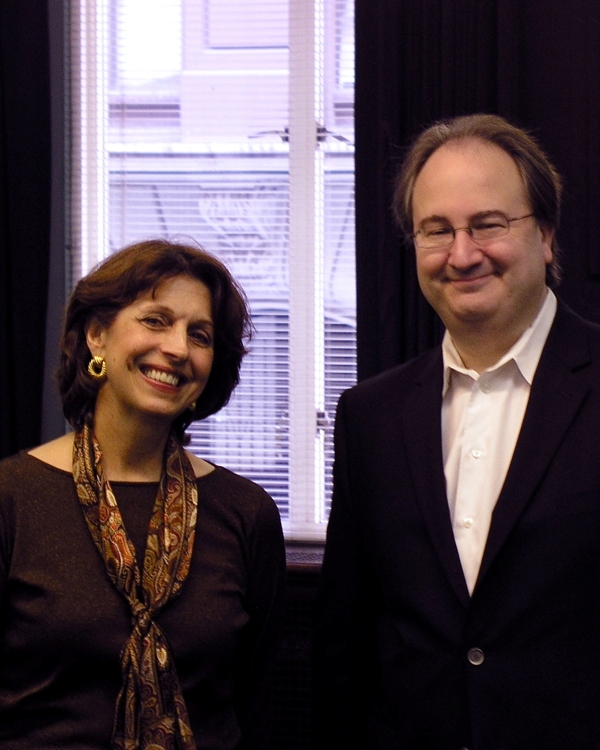
I’m pleased to learn that a play I’ve enjoyed twice during staged readings will be given a full production in fall 2010.
I was curious but had no high expectations when I arrived at the Hoboken Historical Museum last fall for a staged reading, presented by gaia studio, of “The Flora Dora Girls Weekly Sewing Circle.” I know some of the actresses who would be performing, and knew their enthusiasm about bringing life to this previously unproduced play by the late Louis LaRusso II, a Hoboken playwright who received Tony and Drama Desk best play nominations in 1976 for “Lampost Reunion.” That play told of some old pals drinking the night away with their famous singer friend (Frank Sinatra) after he does a show at Madison Square Garden. Word of mouth was that “Flora Dora Girls” was a Hoboken “Steel Magnolias” set in a past that’s largely gone.
Part of my curiosity came from having edited so many Jersey Journal obituaries in the 1980s and ’90s for Italian-American matriarchs who’d worked in sewing factories in Hoboken, Weehawken, Union City, West New York. Each woman’s life had been different, of course, but the obit facts hardly varied: Born in a little town in Italy, came to America as a girl or a wife in the 1920s, worked in a coat or dress factory for 20, 30, even 40 years, the factory’s name now forgotten, not important, but if she had been a “floor lady” who oversaw production, that was always worth noting. Many times a surviving child or grandchild had earned a Dr. or other title to put in front of their name or added an Esq. after it. Sometimes the woman had no survivors, at least in America. Fewer of these obituaries ran with each passing year; very few of these women are living today. All had built America, and done so in sweatshops doing boring work day after day, year after year, so their children could have better lives.
So it meant a lot to me, and to many in the Historical Museum audience who could remember these little old women who dressed mostly in black, that LaRusso’s play, set in the mid-1960s, brings their stories and passions to vivid life. As the producers observe, the characters “come together for a weekly sewing circle, the one place where they don’t need to be ‘ladies.’ They sew, gossip, laugh, cry, fight, curse, ask big questions, tell great stories and bond – like a fist!” By turns dramatic and hysterically funny, “The Flora Dora Girls Weekly Sewing Circle” is a human comedy, richly observed, with emotions and dialogue that pre-date political correctness.
It was fun to revisit “The Flora Dora Girls” on Sept. 26 when it was again performed as a staged reading, with many new faces in the cast, and this time at the Monroe Arts Center in Hoboken. Directed and edited by Taylor Keith, produced by Lillian Ribeiro, featuring Susan Bucci, Eileen Gaughan, Domenica Galati, Angela Kariotis, Sheila Mart, Ellen O’Neil, Florence Pape, Chelsea Lee Richardson, Angela Sharp, Trish Szymanski and Eva Visco. With judicious cuts, the play did seem tighter the second time around. I look forward to seeing it performed on a set with costumes and props.
“The Flora Dora Girls Sewing Circle” is an ensemble work, but Florence Pape had the leading role. She gave what I call a “whammo” performance last year, and she was in top form this year as well. Below is one of the faces Florence showed me in my studio. I applaud her every chance I get.
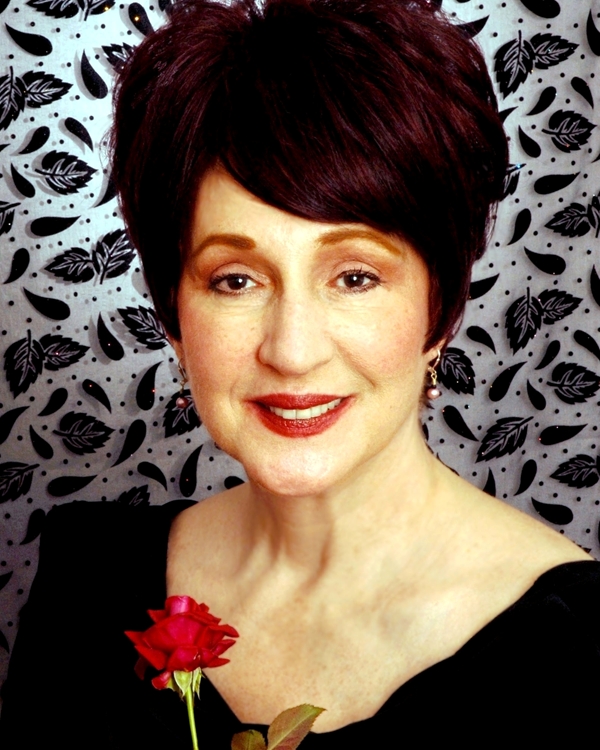
What casting directors and agents want to see nowdays is not necessarily the one perfect headshot, a mutual friend was explaining as I started taking pictures of Kathi Carlson a couple of summers ago. The people doing the hiring today want to see all the characters you can play, this actor and model said, and you need a selection of good shots so you can present an appropriate image for whatever part you’re seeking. Glossies with resumes on the back are still a necessity, but actors now are submitted for work with electronic images e-mailed to decision makers whose desks may be across town, or across the globe.
We were working with the available light streaming through Kathi’s living room windows, which was abundant (though variable, due to clouds, and eventually fading as the sun moved), and added fill light from incandescent bulbs in several lamps with their shades removed. I’ve always been comfortable using improvised lighting; it’s far preferable to flash-burning people’s faces. And digital cameras get better results with it than film cameras ever did.
As our friend Gary worked to call forth all the personas Kathi might take on for a stage play or a movie or commercial, I learned a lot about collaborating with performers. Gary and Kathi had just finished taking an acting class together, and with trust, trickery and a few acting exercises that afternoon we produced more than a dozen usable photos that suggest Kathi’s range. She was set to look for work. It was about that time that she quit an office job in the suburbs to put her energy into pursuing a show business career. It’s all paid off.
Flash forward two years, and Kathi’s been in one theater or film production after another in and around New York, and I’m now lighting my subjects with synced strobes that give consistent results frame after frame in my own well-equipped studio. And the trust and tricks still work their magic. Thanks Gary!
Last spring, Kathi hilariously played an android actress cast in TV soap operas and corny frontier family dramas in Alan Ayckbourn’s early-80s satiric comedy “Comic Potential.” (pictures way below).
Kathi has just been cast as Irina Arkadina in a new Americanized adaptation of Chekov’s “The Seagull” that will be performed in Manhattan by the Curan Repertory Company at The American Theater of Actors from Oct. 28 to Nov. 1. While Kathi often plays “mother” roles, Arkadina is not your run of the mill mom. I’m looking forward to seeing what she does as the big-ego stage actress reluctantly dealing with a neurotic son while trying to hold onto a fickle poet lover as well as her own fading stardom – a role of many nuances attempted by almost every great Russian, British and American actress of the past century.
Kathi Carlson is one of those performers who isn’t afraid of challenges, knowing how much they can stretch one’s talent and make the performing life exciting. Having gone skydiving for a recent birthday thrill, nothing will stop her from creating a memorable Arkadina this fall.
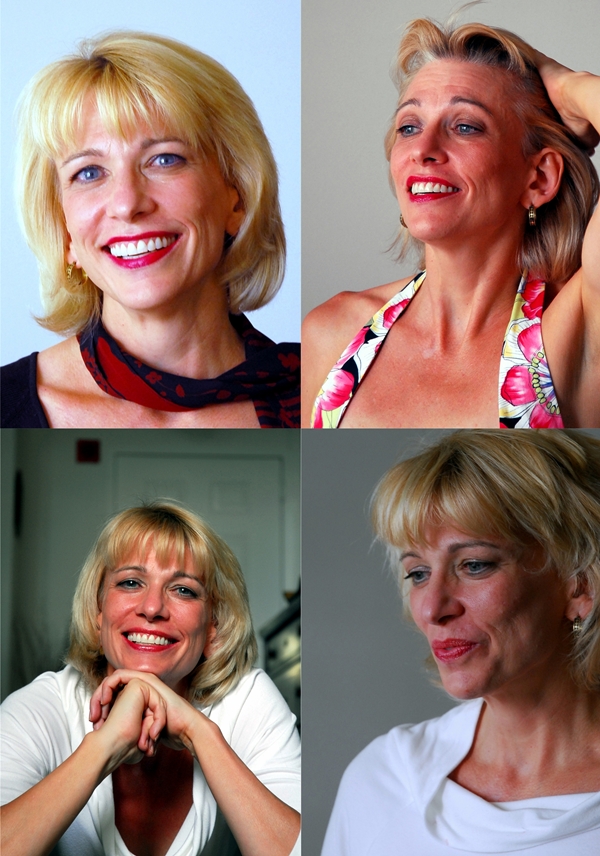
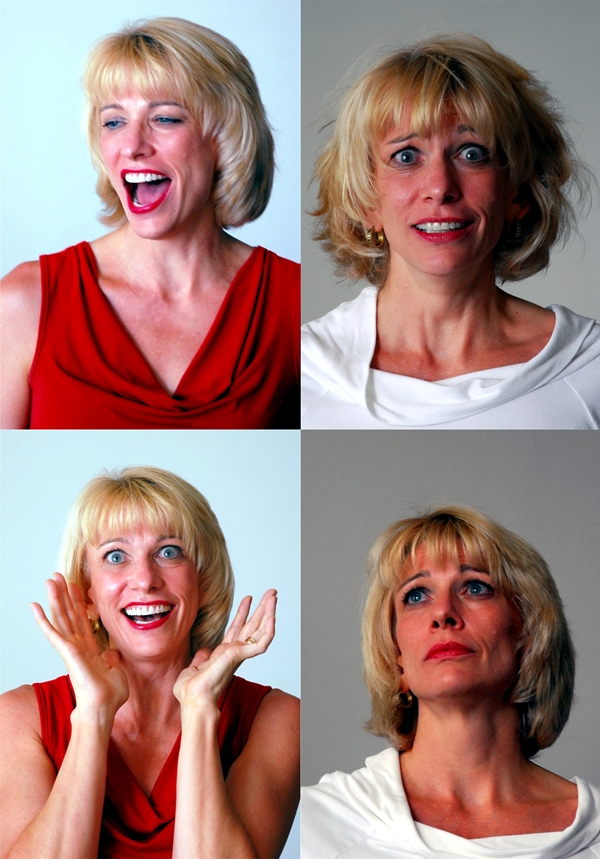
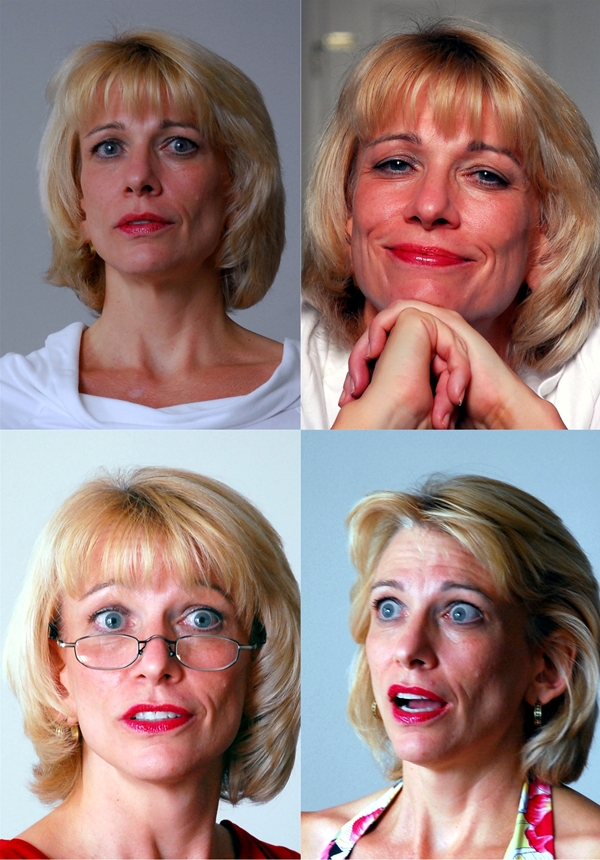
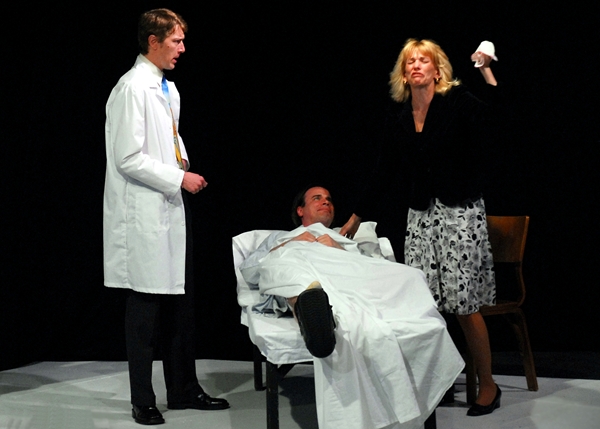
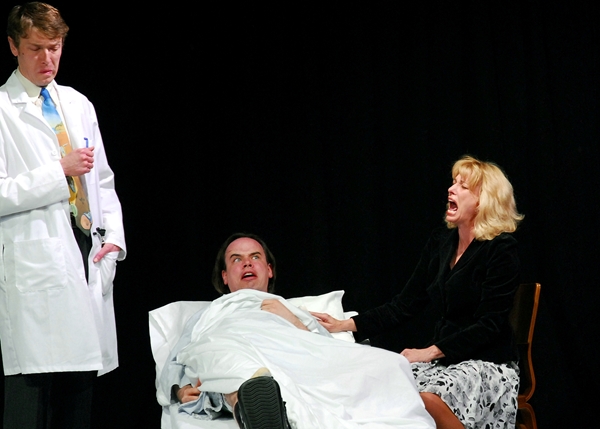
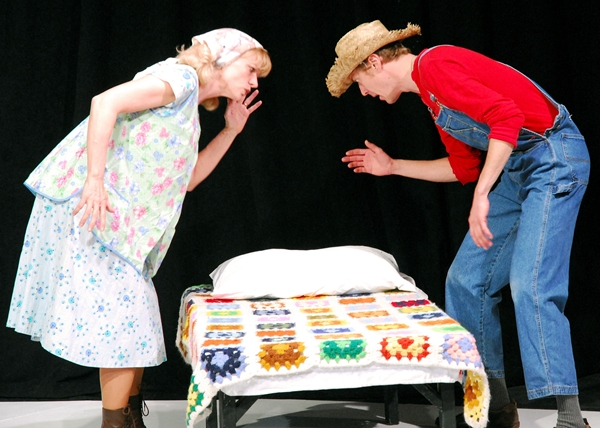
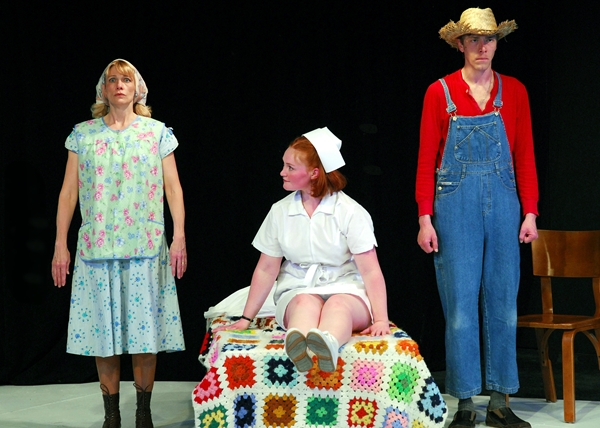
“Beauty is not caused. It is.” So said Emily Dickinson several generations ago, and it’s still true. Last May, I asked Hannah Plotka to pose for portraits for use in an ad I was putting together for the playbill for Hudson Theatre Ensemble’s “Rapunzel.” In HTE’s 2007 production of “The Miracle Worker,” Hannah played one of the children at the school for the blind in Boston that Annie Sullivan leaves when she is called to be Helen Keller’s teacher in Alabama. Hannah’s father David has played feature roles at HTE, and Hannah volunteers there, so Hannah was the perfect portrait subject.
My greatest fear going in was that she might feel exploited; after all, who needs to hold still for a portrait when you don’t need one for school and you’re not looking to work as a professional model or actress anytime soon. Determined not to pressure Hannah to be anyone but herself, I was happy to meet her mother and learn she was of the same mind. Hannah would not be getting a Jon Benet Ramsey makeover for the shoot. Fancy sunglasses and bracelets, fine and fun. Makeup, not much. No costumes. Hannah wanted to be photographed wearing her grandmother’s pendant. Years from now when she perhaps has grandchildren of her own, Hannah will be able to show them how beautiful she was the spring when she was no longer a little girl but not quite yet a teenager.
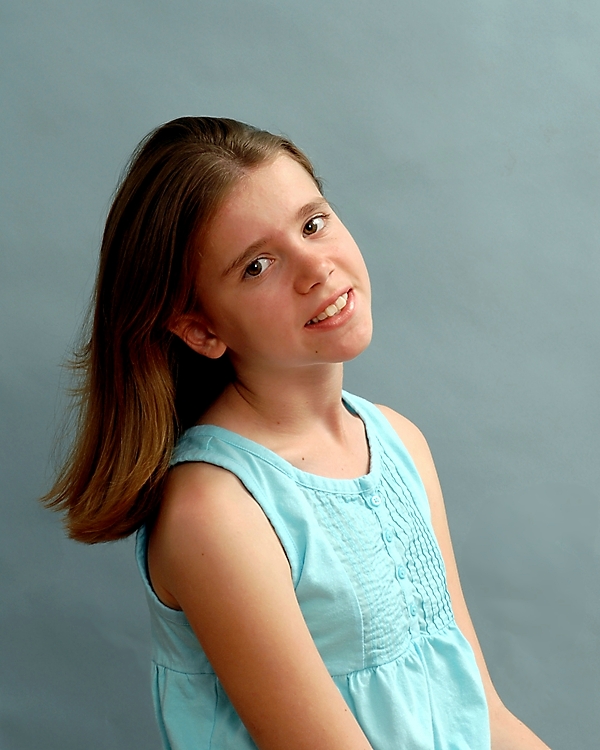
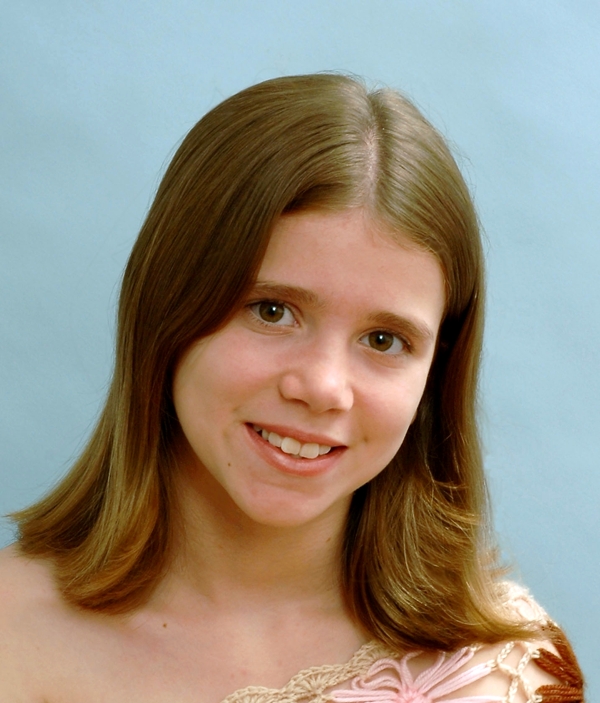
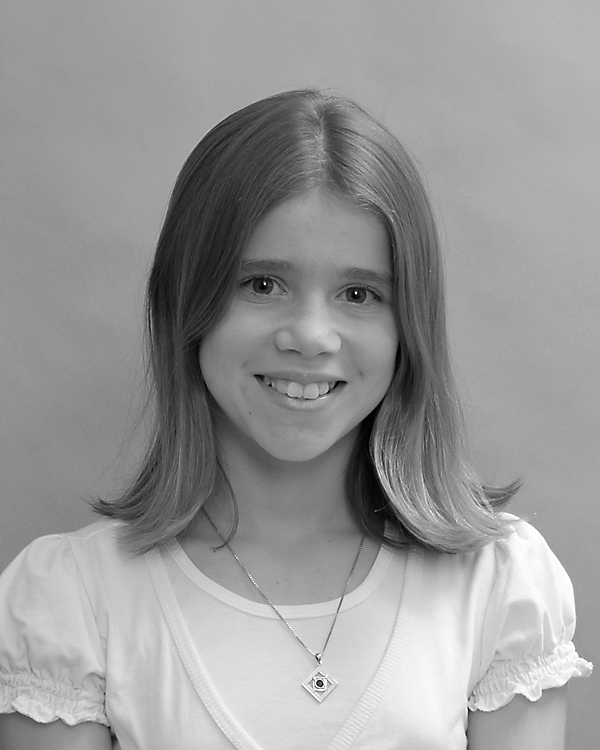
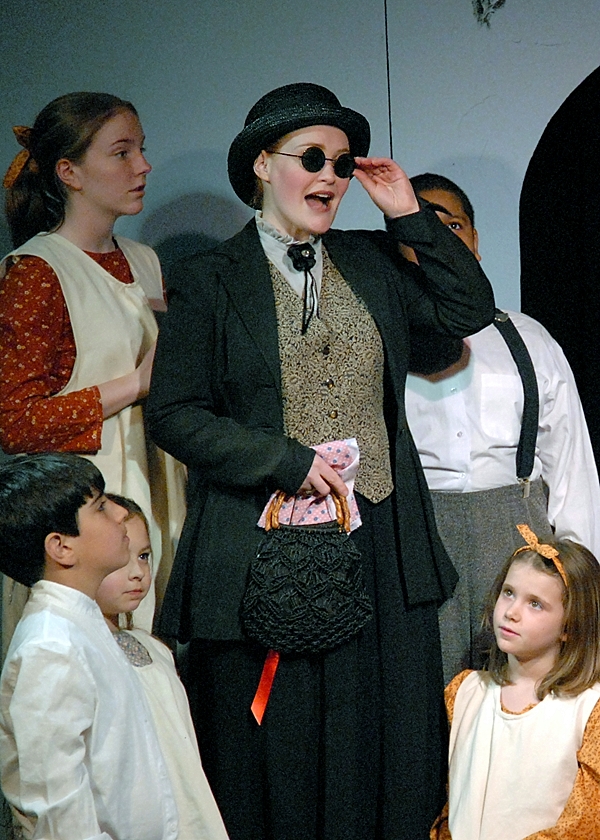
Gregory Nye has appeared in several recent Hudson Theatre Ensemble productions, playing various princes and kings for the kiddies, the hero’s best friend in Larry Shue’s comedy-drama “The Foreigner” and, most recently, a robotic actor playing both a TV soap opera doctor and a farmer in Alan Ayckbourn’s “Comic Potential.” Greg’s ready for paying work on stage and in television, movies and commercials — whoever hires him will be extremely pleased. He can do it all.
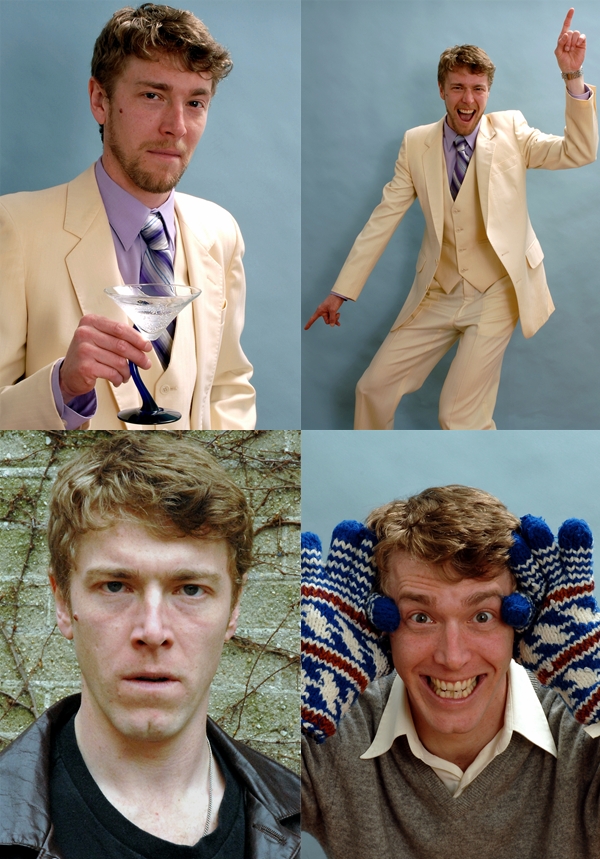
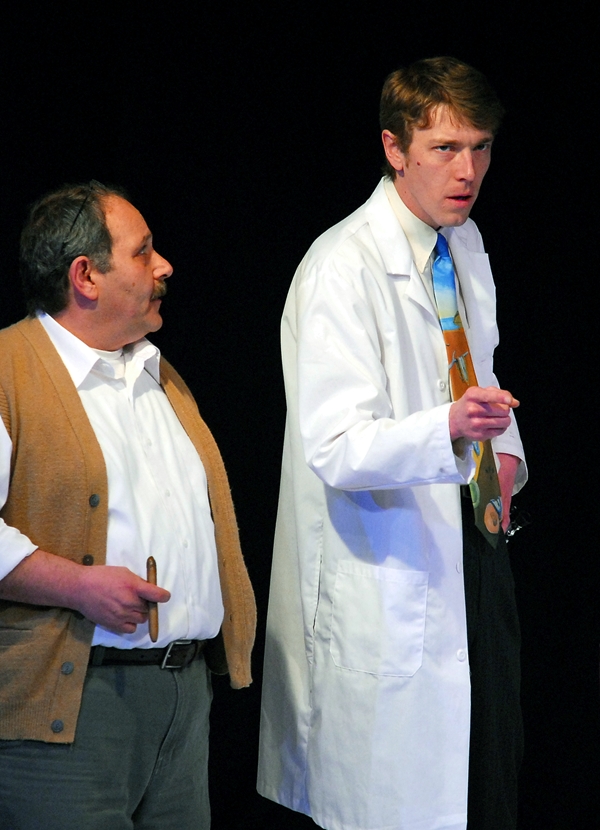
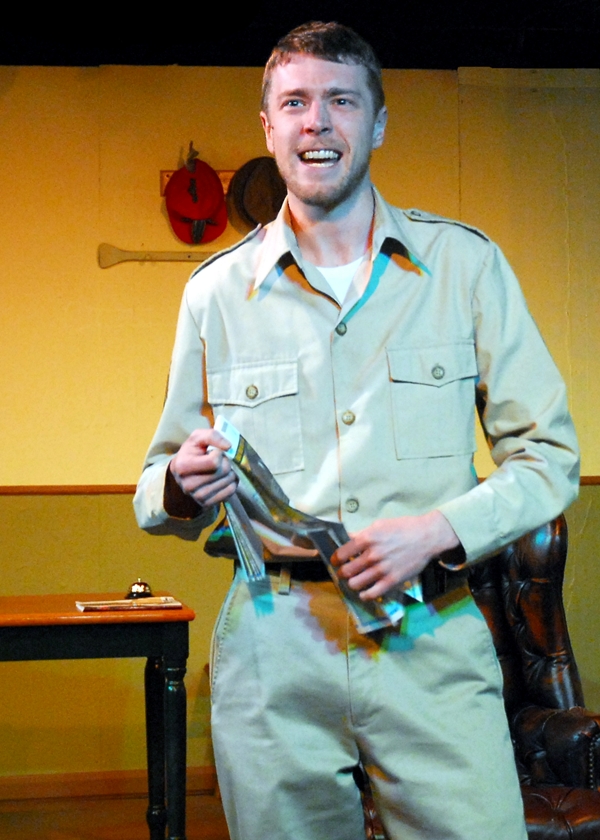

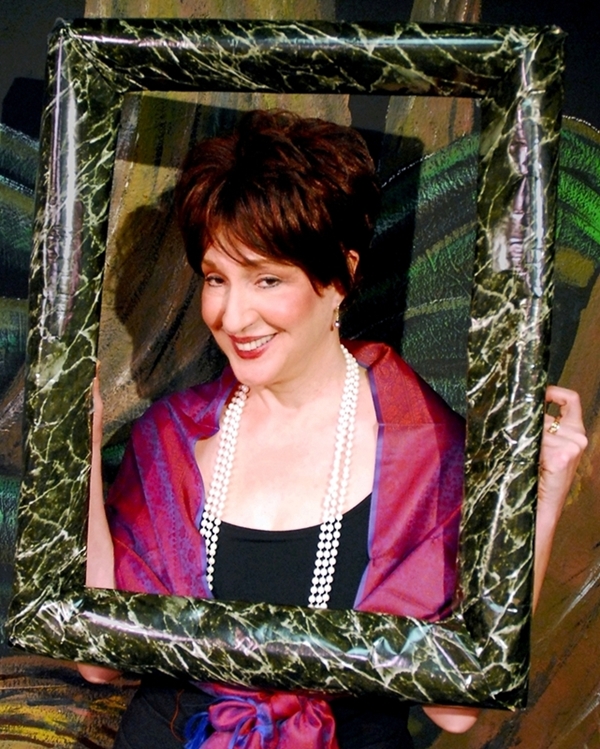
Florence Pape, director of development for the Hudson Theatre Ensemble and one of its frequent leading players. You’ll see Florence frequently on these pages, as she embodies my philosophy of photographing actors who are working today: Show Me Your Faces!
























